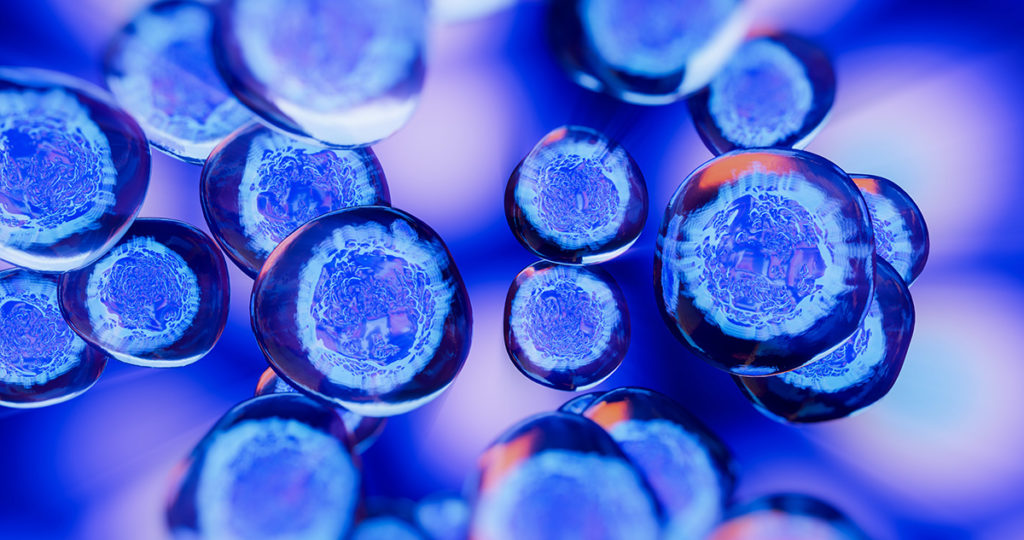
Recently Diagnosed or Relapsed? Stop Looking For a Miracle Cure, and Use Evidence-Based Therapies To Enhance Your Treatment and Prolong Your Remission
Multiple Myeloma an incurable disease, but I have spent the last 25 years in remission using a blend of conventional oncology and evidence-based nutrition, supplementation, and lifestyle therapies from peer-reviewed studies that your oncologist probably hasn't told you about.
Click the orange button to the right to learn more about what you can start doing today.
- You are here:
- Home »
- Blog »
- Multiple Myeloma »
- Myeloma- Is Stem Cell Transplant a Choice or Necessity?
Myeloma- Is Stem Cell Transplant a Choice or Necessity?

In this presentation, Dr. Tomer Mark argues that it is not necessary for (NDMM) patients to achieve a complete remission (CR) and minimum residual disease (MRD), and that transplant is therefore unneccessary.
If you are a newly diagnosed multiple myeloma (NDMM) patient considering what MM treatment to undergo, watching the YouTube video linked below is the best ten minutes you will ever spend. In your life…
I was diagnosed with MM in 2/94. Conventional therapies provided little benefit for me and did a great deal of long-term damage. I have struggled with the pros and cons of conventional MM oncology for NDMM patients for years. The role of autologous stem cell transplants (ASCT) is at the center of my struggle.
In the video below, Dr. Tomer Mark clearly states that an ASCT is NOT a necessity for NDMM patients. Yes, you must understand induction therapies, responses (MRD, CR, etc.) but no longer must all NDMM patients consider an ASCT regardless of your outcome after your induction therapy.
Warning- Dr. Mark tosses around abbreviations so often that will make any newly diagnosed MM’s head spin. I will give you all a brief glossary below.
- CR- complete response
- VGPR- very good partial response
- sCR- stringent complete response
- MRD- minimal residual disease (negative, positive)
- KRD- triplet chemotherapy induction regimen- kyprolis, revlimid, dexamethasone-
- BIRD- Biaxin, Revlimid, Dexamethasone-
More caveats. Dr. Mark makes is sound like achieving MRD or CR with your induction therapy is easy. And it is for some NDMM patients. Many patients struggle with side effects and other challenges.
Experience and research has taught me that there are evidence-based but non-conventional therapies that can increase the NDMM patient’s chances of achieving CR or MRD from his/her induction therapy.
Further- Dr. Mark makes it sound like KRD and BIRD are the best induction therapies available for NDMM patients to achieve MRD or CR. My experience since my diagnosis in early 1994 is that new chemotherapy regimens and combinations of those regimens are always changing and improving. Talk with a MM specialist.
What I don’t know is the percentage of those NDMM patients who undergo those triplets and reach MRD/CR. I recommend that all NDMM patients work with or consult with a myeloma specialist. You can work with your local oncologist day in and day out. But consult with a MM specialist in the beginning.
More importantly, there are a host of evidence-based therapies that can lengthen and deepen your response. As we are all told at our diagnosis, multiple myeloma is a treatable but incurable blood cancer. Your goal is to lengthen each and every remission you achieve.
The takeaway is that MM is a complicated blood cancer. The NDMM patient can’t know enough in the beginning to make the best choices for him/her. Therefore I encourage you to talk with me as well as a MM specialist. Today.
Scroll down to the bottom of the page and write a question or comment. I will reply to you ASAP.
Hang in there,
David Emerson
- MM Survivor
- MM Coach
- Director PeopleBeatingCancer
Recommended Reading:
- Multiple Myeloma Diet- Before, During, After Therapy
- Myeloma Diagnosis- What Can MM Coaching Do For Me?
- Minimal Residual Disease (MRD) Testing for Multiple Myeloma- Does It Matter?
Induction Therapy for Newly Diagnosed Multiple Myeloma
“Numerous induction regimens have proven efficacious in patients with NDMM. Currently three-drug regimens such as: bortezomib, thalidomide, and dexamethasone (VTd); bortezomib, lenalidomide, and dexamethasone (VRd); bortezomib, cyclophosphamide, and dexamethasone (VCd); and carfilzomib, lenalidomide, and dexamethasone (KRd); have all shown improved efficacy compared with two-drug combinations.
Recently, a four-drug combination (bortezomib, melphalan, prednisone, and the monoclonal anti-CD38 antibody daratumumab) was approved in the United States based on the results of the ALCYONE trial.24 Several other four-drug combinations are currently under evaluation, and the results of these trials will have important implications in the treatment for patients with NDMM…”
Implications and outcomes of MRD-negative multiple myeloma patients with immunofixation positivity.
“Conclusions: Persistent monoclonal protein in the face of MRD negativity predicts for a shorter TTP. This likely reflects persistent disease that was not sampled on the BM aspirate in many of these patients compared to those who eventually become IFEneg with a trend towards longer TTP owing to the prolonged half-life and therefore clearance of M protein. This supports the current strategy of assessing for MRD at the time of suspected complete response to reduce the chance of positive MRD tests and thus avoidance of multiple BM exams.æ
Myeloma: ‘BiRD’ Regimen Effective as Initial Treatment
“A Phase II study testing clarithromycin, the immunomodulator lenalidomide, and dexamethasone in combination as induction therapy for multiple myeloma is showing response rates above 90% among newly diagnosed patients…
“The regimen demonstrated an overall response rate of 90 percent with a remarkable combined complete response/near-complete response rate of 42 percent,” Dr. Niesvizky said. “Furthermore, this combination did not appear to interfere with hematopoietic stem cell harvest.”
He speculated that combinations of novel agents such as lenalidomide and bortezomib with dexamethasone might one day obviate the need for stem cell transplant in newly diagnosed patients with myeloma…”

